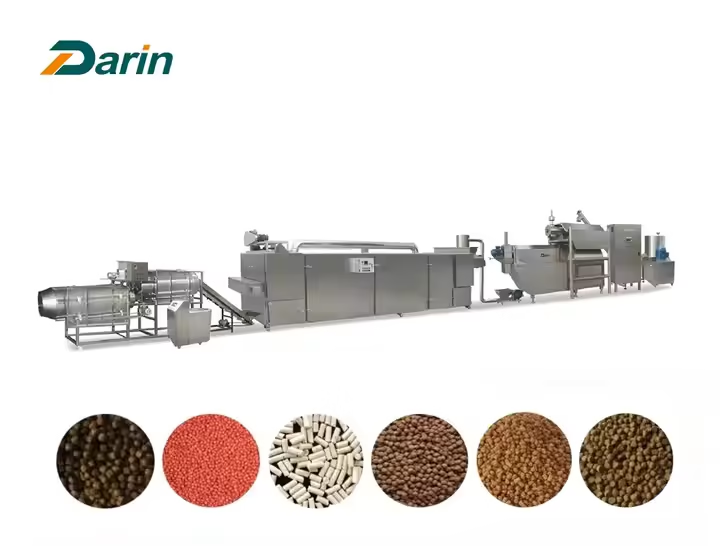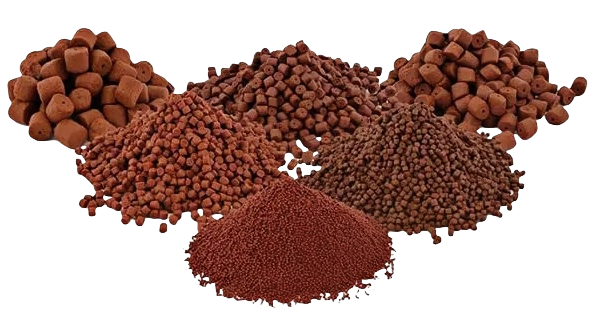
In the world of aquaculture, many fish farmers unknowingly hinder optimal growth performance due to mismatched pellet sizes or inappropriate feed formulations. Improper pellet sizes can lead to feed rejection, waste, or even choking hazards, while poorly selected feed types may lack essential nutrients, directly stunting fish development. These issues not only compromise fish health but also lead to poor feed conversion ratios (FCR), inflated operational costs, and higher mortality rates. However, the good news is—by understanding the biological and nutritional needs of different fish species and their life stages, aquaculture professionals can select pellet sizes and feed types that maximize growth, health, and profitability. This article explains how to make those precise feed choices.
Pellet size and feed type significantly affect fish growth by aligning with species-specific dietary requirements and mouth size across life stages. Optimal pellet sizes ensure better intake, digestion, and feed conversion, while appropriate feed types provide the necessary nutrients—proteins, lipids, vitamins, and minerals—essential for muscle development, immunity, and survival. Inadequate pellet sizing or feed mismatch can cause feed waste, stunted growth, disease susceptibility, and poor economic returns.
Whether you're raising tilapia, catfish, trout, or ornamental species, adjusting pellet size and feed formulation isn't just technical—it’s an economic necessity. Continue reading to explore scientifically grounded strategies and real-world data to optimize feed selection and fish growth performance in your aquaculture operation.
Larger fish always grow faster when fed large pellets.Falso
While larger fish can consume larger pellets, overly large pellets may still reduce palatability or cause choking, leading to stress and suboptimal growth.
Understanding Pellet Size in Aquaculture
Pellet size directly influences how effectively a fish consumes and digests its food. If the pellet is too large, juvenile fish may reject or struggle with it. Too small, and it may dissolve quickly or be inefficiently consumed. Matching pellet size to fish mouth gape and developmental stage is essential.

Table 1: Recommended Pellet Sizes for Common Fish Species by Growth Stage
| Fish Species | Fry (0–2g) | Fingerling (2–20g) | Juvenile (20–100g) | Adult (>100g) |
|---|---|---|---|---|
| Tilapia | 0.5 mm | 1.0 mm | 2.0 mm | 4.0–6.0 mm |
| Catfish | 0.7 mm | 1.5 mm | 3.0 mm | 5.0–6.0 mm |
| Trout | 0.5 mm | 1.0–1.5 mm | 2.5–3.0 mm | 4.0–6.0 mm |
| Carp | 0.8 mm | 1.5 mm | 3.0 mm | 4.0–6.0 mm |
Pellet durability and water stability also matter. Fast-sinking pellets may be wasted if the species feeds at the surface, while poor stability can cause nutrient leaching, especially of vitamins like C and B-complex.
Nutritional Requirements by Feed Type
Different fish species, as well as herbivorous, omnivorous, and carnivorous categories, require varied nutritional profiles. Feed types are usually formulated as:
- Starter Feed (high protein): For fry and fingerlings; often crumbled or micro-pellets.
- Grower Feed (balanced): For juveniles; moderate energy and protein levels.
- Finisher Feed (lower protein/fat): For mature fish prior to harvest.

Table 2: Common Feed Composition by Type and Purpose
| Tipo de alimentação | Crude Protein (%) | Lipid (%) | Carbohydrate (%) | Target Stage |
|---|---|---|---|---|
| Starter Feed | 40–50% | 10–15% | 15–20% | Fry/Fingerling |
| Grower Feed | 30–40% | 8–12% | 20–30% | Juvenile |
| Finisher Feed | 25–30% | 5–8% | 30–40% | Adult/Market-ready |
| Broodstock Feed | 40–45% | 12–18% | 15–20% | Reproductive Adults |
Nota: These values must be adjusted depending on whether the species is carnivorous (e.g., trout, seabass), omnivorous (e.g., tilapia), or herbivorous (e.g., carp).
Impact on Feed Conversion and Growth Rate
Choosing the right pellet size and feed type directly impacts Feed Conversion Ratio (FCR) e Specific Growth Rate (SGR).
- FCR = Feed given (kg) / Weight gain (kg)
- SGR = [(ln Final Weight - ln Initial Weight) / Days] × 100
Case Study: Tilapia Growth with Varying Pellet Sizes
| Pellet Size (mm) | Avg. Daily Gain (g) | FCR | Survival Rate (%) |
|---|---|---|---|
| 1.0 mm | 0.8 | 1.5 | 96% |
| 2.0 mm | 1.2 | 1.3 | 98% |
| 3.5 mm | 0.9 | 1.6 | 93% |
Smaller pellets are easily ingested but may not supply adequate volume, while oversized pellets reduce intake due to poor palatability.
Fish can adjust to any pellet size given sufficient time.Falso
Fish cannot always adapt to inappropriate pellet sizes, especially during early stages, as it may cause choking or rejection. Proper pellet sizing must be stage-specific.
Influence of Feed Type on Different Species
Each fish species has a digestive physiology that influences how it processes macronutrients.
- Carnivores (e.g., trout): High protein (45–50%), low carbs.
- Omnivores (e.g., tilapia): Balanced protein (30–40%), moderate carbs.
- Herbivores (e.g., carp): Lower protein (25–30%), higher carbs and fiber.
Feed types also differ by floating vs. sinking formats. Floating pellets are ideal for surface feeders like tilapia, while catfish and shrimp prefer sinking feed.
Chart: Growth Rate Comparison by Feed Type in Catfish (90-day period)
Growth Rate (g/day)
│
│ ▓
│ ▓ ▓
│ ▓ ▓ ▓
│ ▓ ▓ ▓
│ ▓ ▓ ▓ ▓
│ ▓ ▓ ▓ ▓
├────────────────────────────────
Sinking Floating Extruded
(Floating) (High Digestibility)
Extruded feed (floating) offers better digestibility and nutrient retention, hence improved growth.
Technical Considerations in Feed Processing
Extrusion cooking and pelletization affect nutrient availability, water stability, and floatability.
- Cold-pressed pellets: Lower energy input, suitable for nutrient-sensitive additives, but poor water stability.
- Steam-pelleted feed: Moderate cooking; often used in larger-scale aquaculture.
- Extruded feed: High-temperature processing; enhances starch gelatinization and protein digestibility.
Important processing parameters include:
| Parâmetro | Alcance do alvo |
|---|---|
| Pellet moisture | 8–12% |
| Extrusion temp. | 120–160°C |
| Density (float/sink) | >0.95 g/cm³ = sink, <0.95 = float |
| Crumble index | <10% breakage during storage |
\
Extruded fish feed always floats on water.Verdadeiro
Extruded feed is designed to have a lower density due to air pockets, causing it to float. Sinking types can also be produced by altering processing conditions.
Practical Recommendations for Fish Farmers
- Match pellet size to fish mouth gape using weight-based guidelines.
- Use life-stage appropriate feed types—don't overfeed fry with grower feed.
- Avoid abrupt feed transitions to reduce stress and waste.
- Evaluate FCR regularly and adjust feed strategies.
- Observe feeding behavior—slow consumption or leftover feed indicates a problem.
Resumo final
Selecting the correct tamanho do pellet e feed type is essential for maximizing fish growth, minimizing feed waste, and enhancing overall aquaculture profitability. Through an understanding of species-specific dietary needs, life stage development, and technical feed processing, fish farmers can make scientifically sound decisions that yield faster growth and better economic outcomes.
Ready to Optimize Your Feed Strategy?
If you’re looking to scale your aquaculture business with precision-engineered pellet machines that deliver consistent size, moisture, and density—contact Darin Machinery. As a trusted global supplier of advanced fish feed production lines, we’re here to help you produce feeds that drive real growth.
📩 Reach out to Darin Machinery today for custom fish feed solutions tailored to your species, pellet size, and nutritional goals.











